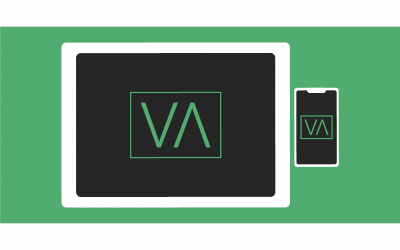Lead generation represents a fundamental pillar for any company operating in the B2B sector. However, the difference between successful lead generation and a waste of economic and time resources lies mainly in identifying and understanding potential customers’ real needs.
Knowledge of the need expressed by a prospect is fundamental information that allows you to increase the closing percentages of offers. Below, we will analyze how it is possible to intercept the expressed needs of prospects on the Web to initiate successful commercial communications that increase B2B sales.
First of all, what methods and channels exist for lead generation in B2B?
There are, at least in broad terms, two ways to do Lead Generation—the one where the need of a company is known and the one where it is not known. We, therefore, begin our analysis from the most widespread way, which we do not embrace at Vehnta, that is, the one in which the prospects ‘ needs are not known. Then, we move on to our approach at Vehnta: Lead Generation by understanding the needs of potential customers.
Lead Generation without Knowing the Need
If you don’t have information about the needs of your prospects, there are two main ways to do lead generation: online and offline. Let’s start with the offline one.
Offline B2B Lead Generation
Lead generation can be achieved through events such as trade fairs, where companies participate by renting a stand to meet potential customers and collect email contact details, which will then be followed up to start a commercial conversation. Indeed, the fair is an excellent traditional activity for getting to know potential customers, but it is an activity that requires significant investments, both in terms of money and time.
Lead generation practice is networking based on interpersonal relationships and word of mouth; for example, a customer provides a reference of another potential customer interested in the company. Even in this case, it is a working and functional practice that lacks solidity when the goal is significant or international growth.
Online B2B Lead Generation
B2B lead generation, on the other hand, refers to the strategies and tactics used by companies to generate potential customers interested in their products or services, mainly using digital online platforms and tools.
Lead generation strategies can include a wide range of activities, which we can divide into two macro-categories: inbound and outbound.
Inbound lead generation
Among the tools and methods for lead generation inbound includes content marketing, an activity that often does not incur a direct cost to the company but instead an indirect cost and consists of the creation and sharing of useful and informative content, such as blog posts, whitepapers, e-books, webinars, videos, and infographics, to attract and engage interested potential customers on your site.
Readers, intrigued by the content, should spend time reading and informing themselves on the company website, in some cases even spontaneously providing their details to be contacted via a contact form, for example.
To maximize the percentage of lead generation in relation to page views, companies create valuable content to provide free of charge in exchange for an email or telephone number; these contents are called lead magnets. This strategy is a very valid practice, but in many B2B sectors, it does not attract the right leads. In fact, a decision-maker is unlikely to share his contacts.
Lead generation outbound
Outbound lead generation represents a proactive approach companies adopt to broaden their visibility through advertising campaigns on search engines and social media. This method, often integrated with content marketing, aims to maximize the company’s visibility and accessibility to its target audience. It is important to note that the effectiveness of such campaigns can vary considerably.
For example, many companies invest significant amounts in paid search campaigns, hoping to appear among the first search results through a financial investment. However, they often face very high costs, in terms of high Cost per Click (CPC) or Cost per thousand impressions (CPM), due to the intense competition in the sector.
Furthermore, although these campaigns can momentarily capture a user’s interest while browsing online, they cannot identify whether there is a real interest or need for the product on the user’s part or whether it is simply a temporary curiosity.
In fact, according to research from the Boston Consulting Group, companies waste over $2 trillion each year on online advertising, primarily due to a lack of effective targeting and difficulty measuring return on investment. This economic waste is due to the ineffective nature of many online advertising campaigns, which fail to guarantee an adequate correspondence between the company’s offer and the user’s actual needs.
Furthermore, users often click on ads by mistake, are just curious, or are looking for information other than that offered by the company, further increasing the waste of resources.
Therefore, although lead generation outbound can be a proactive method to reach a wider audience, it is essential to use it carefully and integrate it with targeting strategies and data analysis to maximize effectiveness and reduce the risk of economic waste.
As we have seen in all these approaches, whether offline or online, inbound or outbound, we notice a constant effort on the company’s part in trying to identify a latent need in its prospects. However, with this activity, we cannot confirm the existence of a real need on the part of the prospect, or at least it is not possible to do so in the B2B sector with the tools available to companies so far.
This situation, therefore, leads to great inefficiencies, as we have highlighted in the body of the article, since it involves a considerable waste of resources, both in terms of direct costs, such as participation in trade fairs and trips and in terms of indirect costs such as online advertising and content marketing.
So, how can we make the Lead Generation process more efficient?
Lead Generation Knowing the Need
lead generation process and achieving the best business results lies in focusing on companies that show a sincere and keen interest in their behavior.
However, it can be challenging to intercept real interest, but online, it is possible to do so if you recognize the right signals. When a prospect fills out a form or leaves his contact in exchange for a whitepaper, it may seem you’ve identified a need. However, in reality, it may simply be a general interest rather than a real need to solve a specific problem or satisfy an immediate need, just as we discussed above.
In the context of strategic B2B sales, it is crucial to distinguish between a simple curiosity for acquiring knowledge and a real business opportunity, which leads to the opening of a conversation between the sales department of the B2B company and the purchasing department of the target company.
Intercepting a real need of a potential customer right at the moment he is expressing it is, in fact, extremely valuable commercial information.
For example, if a company were to search on Google to find a solution to an urgent problem, such as a supplier capable of producing a component quickly, this behavior could be interpreted as a clear need.
By intercepting this online behavior, and therefore the need of that company, information would be available that could open up an interesting commercial opportunity.
VisionSphere, a BI software that comes into play, can intercept these behaviors, intercept online searches for companies in line with an offer, and qualify them, reporting the most promising, “hottest” opportunities on which to concentrate commercial efforts. This BI software designed and developed by Vehnta allows the sales department of a company B2B to focus resources only on truly interested target companies, which can be translated into qualified leads thanks also to three key marketing actions:
- VisionSphere
- LinkedIn Ads
- Marketing automation
VisionSphere
Thanks to VisionSphere, it is possible to define companies as part of a market in geographical and application terms. Defining a market is here understood as creating lists of potential target companies: lists with a finite number of companies that are part of the target market. Subsequently, again, thanks to VisionSphere, as previously mentioned, it will be possible to intercept companies that demonstrate a need for information taken from their online behavior. These companies will be the targets of the following step.
LinkedIn Ads
LinkedIn advertising is based on targeted advertising aimed at specific companies and people with critical roles. Thanks to VisionSphere, as previously explained, it is, in fact, possible to define the companies with the highest closing potential: these are the companies that VisionSphere qualifies through their behavior on the Web. However, regarding identifying target people with key roles, we proceed with a study of the reference buyer personas of the target companies. This action is implemented to increase brand awareness.
Marketing automation
The third action is based on marketing automation via email, a smart and surgical activity that aims to target those figures and roles within the company with high decision-making or reference power for the product or service you want to sell. This one is the third step that capitalizes on the first two steps. In this way, you can have much more qualified lead generation.
Conclusion
Lead generation strategies translate into a qualified funnel and real business opportunities, ready to be transferred to the company’s sales office. Working on highly qualified leads means a greater probability of closing deals and, therefore, B2B sales, leading to greater economic efficiency and saving time for staff who would otherwise have to manage potentially unsuccessful deals.
And what do you think of Google Ads campaigns? Do you think they could be helpful for your business? Please write us in the form below to request a consultation!





